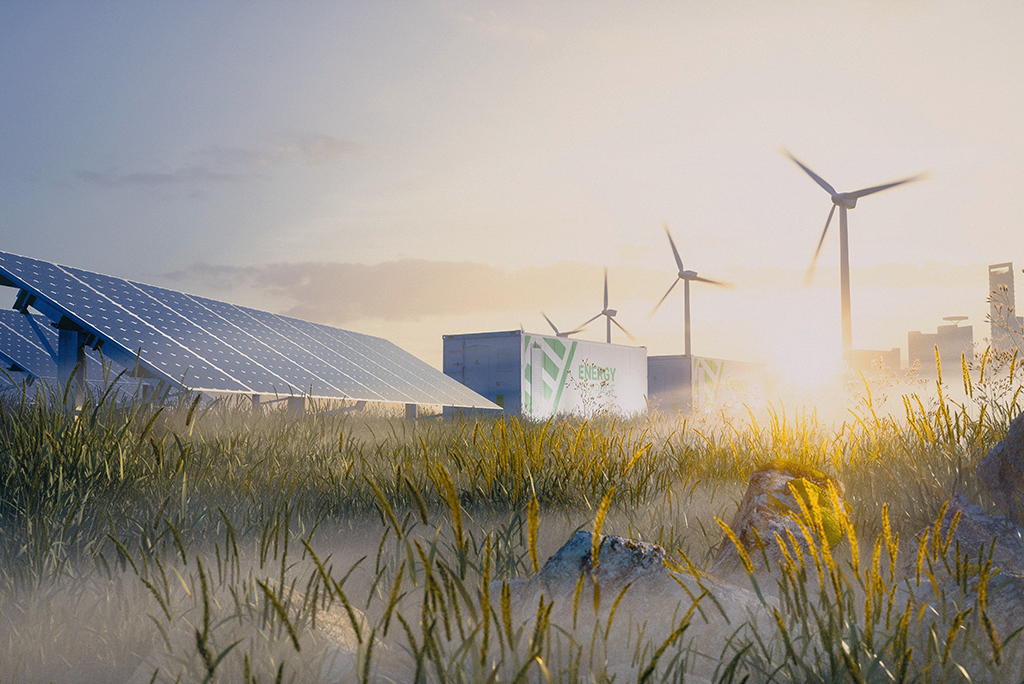
As climate change heats up, a number of countries are racing to generate 100 percent of their power from renewable energy sources by 2050. It’s an ambitious goal, but one that’s increasingly attainable as green energy technologies become more affordable. A quarter of the 184 countries that added their names to the Paris Climate Agreement are positioned to meet their renewable goals—some even before 2050—and a handful of pioneers are leading the way.
Small Countries, Big Goals
The tiny island nation of Cape Verde has a giant plan: to become Africa’s first country to run solely on renewable energy. The country wants half its energy to come from renewables by 2030, and entirely from them by 2050.
Scotland and Costa Rica have even greater ambitions—both countries are on target to reach 100% renewable energy by the end of 2020.
Scotland has invested heavily in wind and solar, and the country is aiming to reach net-zero emissions by 2045. Costa Rica currently produces over 78% of its electricity using natural water systems. Much of the rest comes from wind, solar, and geothermal energy sources. To reach its renewable energy goal, the country is considering electric vehicle initiatives and an expansion of geothermal energy projects.
The European nation of Slovenia recently announced that it wants to slash carbon emissions and phase out the use of coal by 2050. It pledged to increase its renewable energy resources twofold over the next decade. In order to meet increasing energy demands, Prime Minister Marjan Sarec has called for a second nuclear power plant.
Even local communities are making huge impacts with renewables.
Wolfhagen, a village in Germany of less than 14,000 residents, has built its own renewable power plant, which runs on solar and wind. The plant is managed by a citizen cooperative that owns a quarter of the company. Officials say the cooperative is essential because it gives villagers a stake in the project’s success.
Larger Governments Face Major Barriers, But Solutions are Coming
In regards to sustainability, China and India face many of the same challenges. Both contain over a billion people, have bureaucratic governments, and rely heavily on fossil fuels, making their transition to renewable energy a slower process.
In India, there’s hope that a recently introduced bill, which would regulate renewable energy, will spur investment in green technology.
The United States withdrew from the Paris Climate Change agreement in 2019. However, the state of California, which represents the world’s fifth largest economy, is committed to transitioning to renewable energy by 2045.
Although that goal won’t be easy to achieve as a state with almost 40 million people, experts from the Lawrence Livermore National Laboratory (LLNL) think it can be done. The scientists told California lawmakers that the state can reach carbon neutrality through various carbon reduction efforts. Possible methods include restoring forests and wetlands, converting waste into biofuels, and encouraging more consumers to switch to electric vehicles. These efforts would likely cost less than $1 billion USD a year, which is just under 1% of California’s gross domestic product.
“We found that by removing CO2 from the air, the state can achieve its goal at a cost less than what we currently spend to manage trash,” said George Peridas, director of carbon management partnerships at LLNL.
Connecting Distributed Energy Resources
Leveraging distributed energy resources (DERs) and microgrids can help countries reach their green energy goals.
Introduction to IEEE Std 1547-2018: Connecting Distributed Energy Resources is a new course program that focuses on IEEE Standard 1547-2018™. This standard provides technical specifications for interconnection and interoperability between utility electric power systems (EPSs) and distributed energy resources. It also provides requirements relevant to the performance, operation, testing, safety considerations, and maintenance of the interconnection.
Contact an IEEE Content Specialist today to learn more about getting access to these courses for your organization.
Do you want to learn more about Standard 1547 for yourself? Visit the IEEE Learning Network.
Resources
News Desk. (3 February 2020). Renewable energy bill set to remove legal uncertainty in green projects. The Jakarta Post.
Cahill, Nick. (4 February 2020). Experts tell California lawmakers carbon neutrality is affordable and feasible. Missoula Current.
Hanley, Steve. (3 February 2020). Costa Rica Is At Nearly 100% Renewable Energy For Electricity. CleanTechnica.
(3 February 2020). Small German Town Uses 100% Renewable Energy By Building Its Own Power Plants. WBUR
(14 January 2020.) Slovenia latest nation to seek carbon neutrality by 2050. Reuters.
Lawrence Livermore National Laboratory. (30 January 2020). California can become carbon neutral by 2045. Newswise.
Darby, Luke. (31 January 2020). Why Can’t America Follow Scotland to 100 Percent Renewable Energy? GQ.
(31 January 2020). Cape Verde races to rely solely on renewable energy. Marketplace Africa, CNN Business.
Schalit, Naomi. (6 December 2019). This small German town took back the power – and went fully renewable. The Conversation.
Weise, Elizabeth. (4 June 2019). On World Environment Day, everything you know about energy in the US might be wrong. USA TODAY.


[…] The expansion of renewables in 2020, however, will be less certain due to the COVID-19 pandemic. The current world events have triggered a reduction in oil and gas production as millions of people stay home to avoid spreading infection. […]
[…] engineering today is the development and implementation of smart grid technology. Fueled by the global demand for greener technologies and alternative fuels, environmentally-friendly smart grid technology can stimulate stagnated economies. It also has the […]